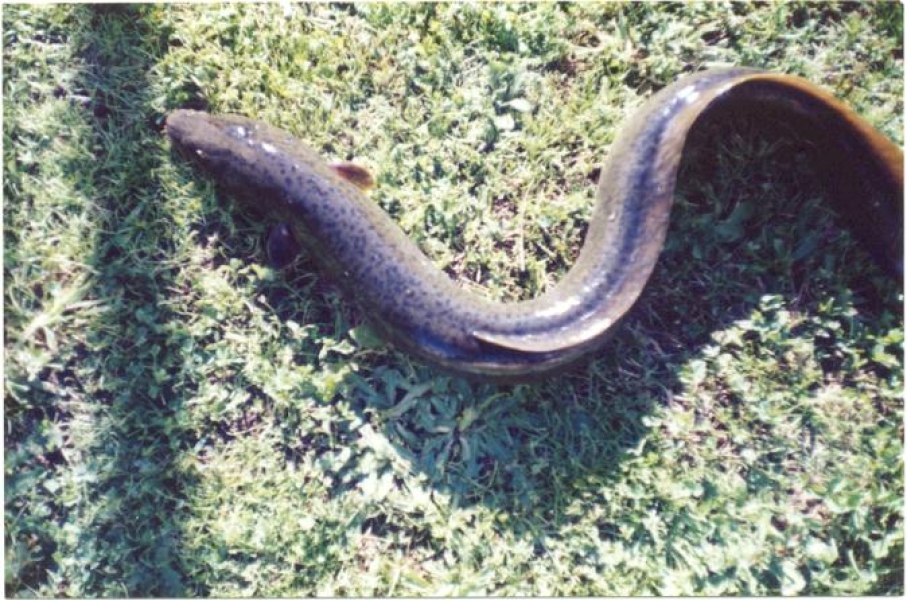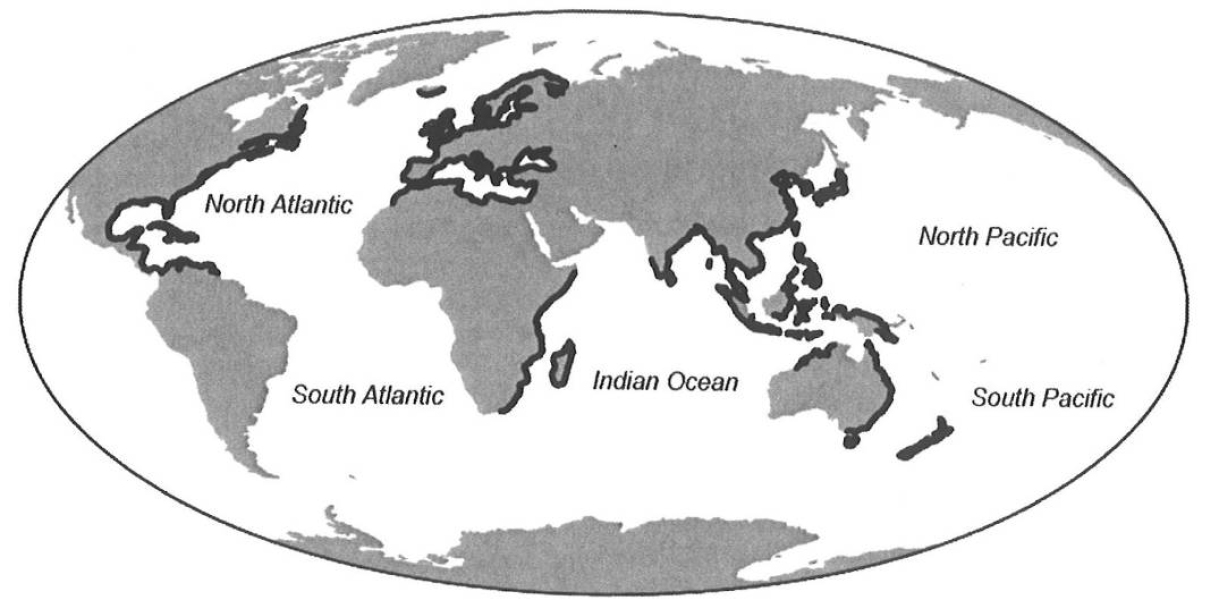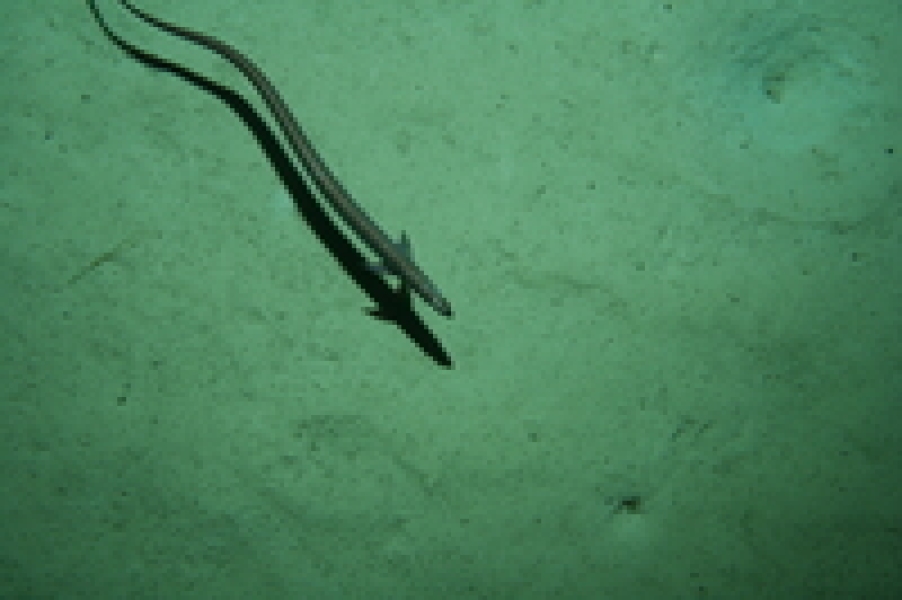It is thought freshwater eels were originally marine fish which adapted to live most of their lives in fresh water, and that the present distribution of the 18 species of freshwater eel is largely a result of continental drift.
|
Kingdom: |
Animalia |
|
Phylum: |
Chordata |
|
Class: |
Actinopterygii |
|
Subclass: |
Neopterygii |
|
Order: |
Anguilliformes |
|
Suborder: |
Anguilloidei |
|
Family: |
Anguillidae |
|
Genus: |
Anguilla |
Anguilliformes are the order of fish that contain eels. Eels are distributed worldwide, and there are 720 species of 'true eels', or Anguilliformes. Almost all of these species are marine: for example, there are over 130 species of conger eels, 170 of moray eels, and 250 of worm (or snake) eels.
Anguillidae is the family of fish that contains the majority of the freshwater eels. There are currently 18 recognised freshwater eels (Anguilla) species/subspecies worldwide, distributed in both tropical (around the equator) and temperate (between the tropics and polar circles) zones, with some species overlapping between these two zones.
Recent studies indicate that tropical eels make much shorter migrations (100's of km) to spawn in areas near their freshwater habitats, compared to the long distances travelled by temperate eels (1000's of km).
Table: Geographic ranges of freshwater eel species from around the world.
| Zone | Species | Geographical distribution | Mottled skin? |
|---|---|---|---|
| Tropical | A. marmorata | Indo-Pacific: Indian Ocean to Polynesia | Yes |
| A. bicolor | Indo-Pacific: Indian Ocean to Papua New Guinea | No | |
| A. celebesensis | Tropical Pacific: Indonesia, South China Sea | Yes | |
| A. borneensis | Tropical Pacific: Indonesia, South China Sea | No | |
| A. nebulosa | Indo-Pacific: Indian Ocean | Yes | |
| A. mossambica | Indo-Atlantic: Indian Ocean | No | |
| A. megastoma | Tropical-Pacific: New Guinea to Polynesia | Yes | |
| A. obscura | Indo-Pacific: New Guinea to Polynesia | No | |
|
A. reinhardtii (Australian longfin) |
Australia, New Caledonia to North Island of New Zealand |
Yes | |
| Temperate | A. anguilla | Indo-Atlantic: Europe, North Africa, Mediterranean, Iceland | No |
| A. rostrata | Indo-Atlantic: East coast of North, Central and South America, Greenland | No | |
| A. japonica | China and Japan | No | |
| A. australis (Shortfin) | Oceania: Australia and New Zealand | No | |
| A. dieffenbachii (New Zealand longfin) |
Oceania: New Zealand, Chatham and Auckland Islands |
No |
References and further reading
Aoyama, J. (2009). Life history and evolution of migration in catadromous eels (Genus Anguilla). Aqua-BioScience Monographs 2(1): 1-42. http://www.terrapub.co.jp/onlinemonographs/absm/abstract/02/0201.html
Jellyman, D.J. (2003). The distribution and biology of the South Pacific species of Anguilla. In: Aida, K., Tsukamoto, K., Yamauchi, K (Eds). Eel Biology. Springer, Tokyo. pp. 275-292. http://www.springer.com/life+sciences/animal+sciences/book/978-4-431-00458-5
Tesch, F.W. (2003). The Eel. Fifth edition. Blackwell Science Ltd and The Fisheries Society of the British Isles, Oxford. 408 p.



